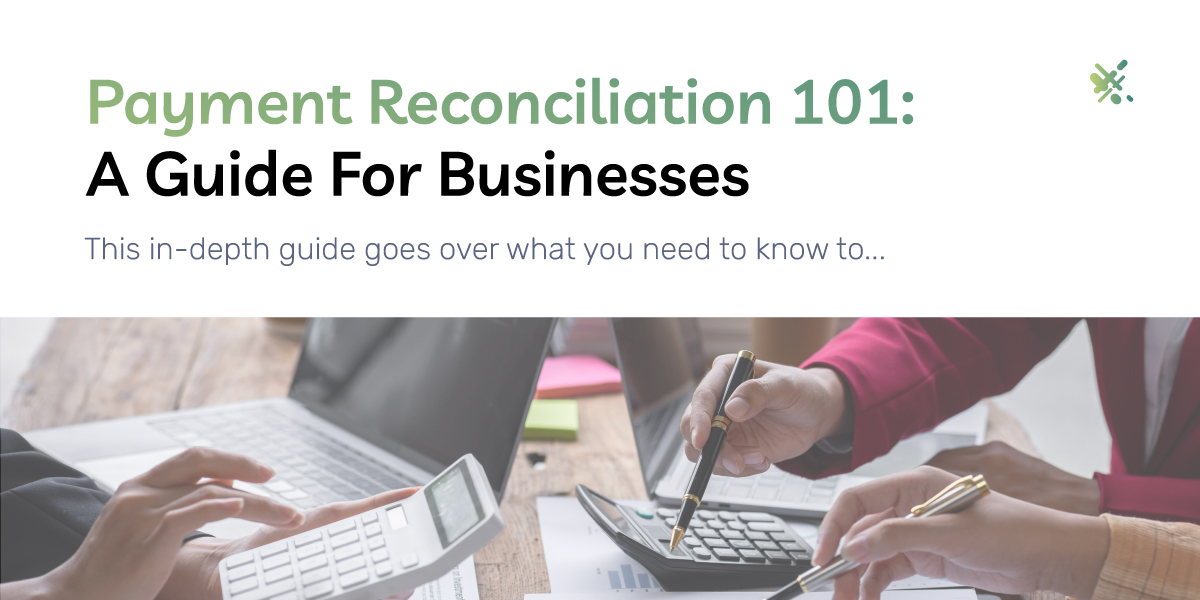A common trait among the most successful small businesses is that they keep highly detailed financial records. Slight accounting irregularities can quickly spiral out of control and become a drag on a business’s overall profitability. Sloppy accounting can also prevent business owners from growing or scaling their businesses as they want to.
By allowing accounting problems to go on, the issues become harder to solve and can have greater tax and financial implications. One way businesses ensure their accounting is accurate is through payment reconciliation.
Payment reconciliation is a process that confirms that incoming payments and their financial records match completely. This is a crucial process for nearly any business that wants to keep the most accurate accounting records.
To help your business, we’ll outline what payment reconciliation is and how it works so you can improve your bookkeeping and maintain profitability.
What Is Payment Reconciliation?
Payment reconciliation is an accounting practice that confirms payment information matches with bank statements, financial statements, and other business records. The goal is to find any discrepancy and rectify it immediately.
Payment reconciliation ensures that a business accurately records its finances and prevents loss due to poor accounting practices, fraud, or other means. Payment reconciliation also ensures that reports and forecasts are based on accurate information.
Without payment reconciliation, a business may incorrectly believe it has access to revenue that doesn’t actually exist in its accounts. This can lead to financial problems, tax issues, and an inability to fund business operations properly.
When you reconcile, meaning accounting practices to verify different amounts and transactions, you are applying business best practices and ensuring your company’s financial health.
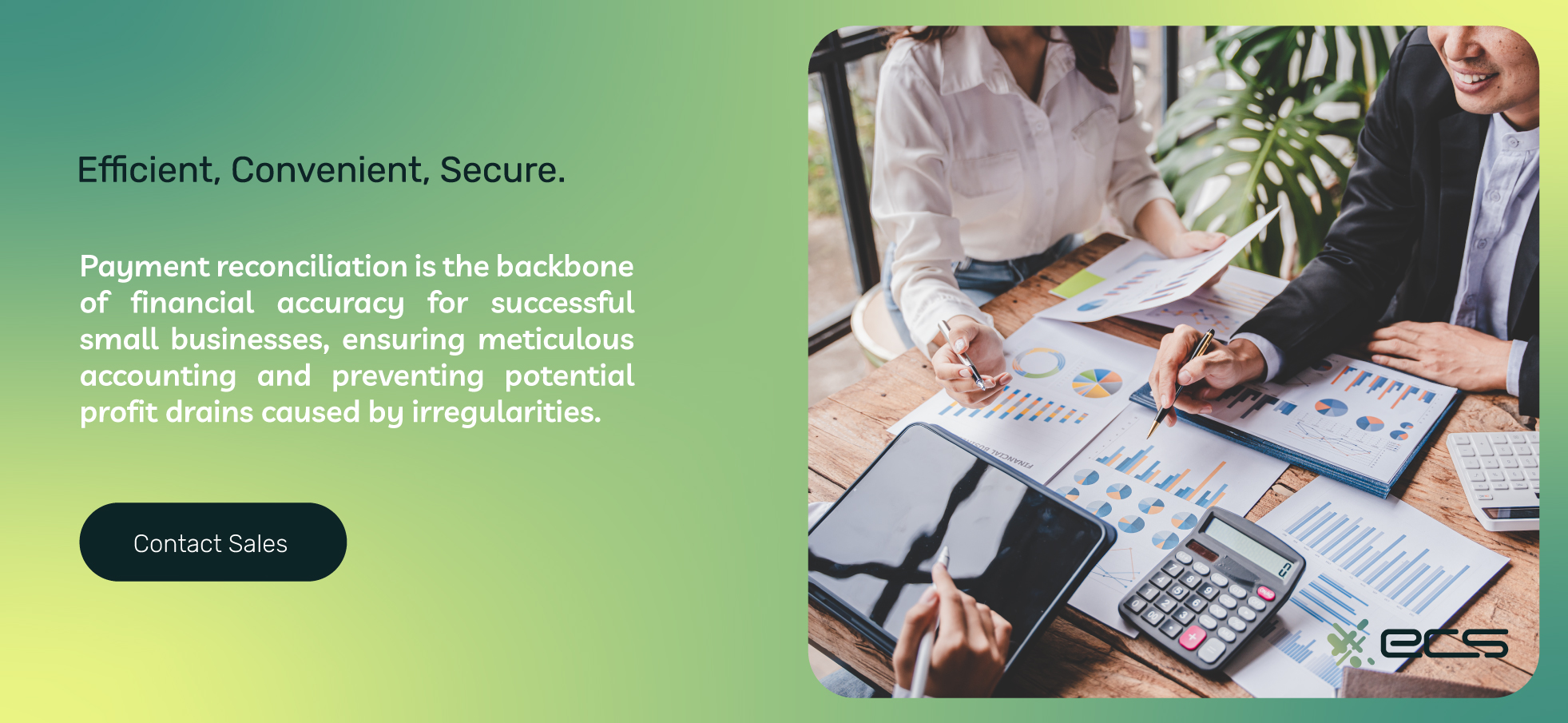
How Does Payment Reconciliation Work
There are several steps in the payment reconciliation process. Your business may use slight variations on each step based on how you receive payments and other factors. However, almost every business will follow these steps to ensure a consistent payment recognition process.
First, you want to break down the overall process into two areas of record keeping: internal and external records. Internal records are your invoices, payment records, and other documents you create internally.
Your external records include bank statements, payment processing records, and other documents you access via financial institutions or third-party services.
Your payment reconciliation workflow then reconciles these internal and external documents, ensuring the accuracy and confirmation of every record.
Below are the steps used in a typical payment reconciliation process.
Step 1 Gather Your Records
First, you need to identify the sources of all your internal and external records. This includes accounting software, paper records like physical invoices, and bank records.
If this is your first time implementing a payment reconciliation workflow, gathering the supporting documentation will take some time. During this step, you should also look for issues making this process more difficult than it should be.
For example, if you are tracking down a large number of physical documents and receipts, it’s a sign you need to move to a more digitized accounting process across your business.
Physical records and manual data entry are always prone to errors, making your payment reconciliation process much more difficult.
Step 2 Compare Records & Spot Discrepancies
Once you’ve sourced all the documents and records you need, it’s time to compare matching transactions for accuracy and identify any discrepancies.
Each discrepancy you find may have an internal or an external cause, and that’s the goal of your payment reconciliation process.
When you find a discrepancy, you should note the discrepancy along with all related documents and information. You can do this in a spreadsheet or by using a specific feature within your accounting system to log financial transactions.
This is so that when you reconcile the discrepancy, you know exactly which documents to investigate for each issue.
Step 3 Mark Each Discrepancy & Identify The Source
Once you’ve identified discrepancies, you want to document those along with the source of the discrepancy. For example, someone logged a payment as paid in the accounting records even though it was never received, causing the discrepancy.
In this example, you know the source of the discrepancy is an unpaid invoice. Identifying the source of the discrepancy is essential for the next steps when you resolve each discrepancy.
For every discrepancy found, you should have a source of the discrepancy, or you need to do further investigation. Ultimately, you will want to account for every discrepancy so you can resolve it.
Step 4 Resolve Each Accounting Discrepancy
Using our above example, if you notice that an invoice was never paid but was recorded as paid, you would resolve that by seeking the original payment.
You must also adjust your existing records to reflect that you never actually received those funds. An incorrect accounting entry like this may have worked its way into several reports and financial statements. You want to ensure you correct every record related to that payment discrepancy.
Go through each discrepancy you find and resolve it by correcting the related records and making any necessary changes to retrieve the funds or identify why they were not received or recorded correctly.
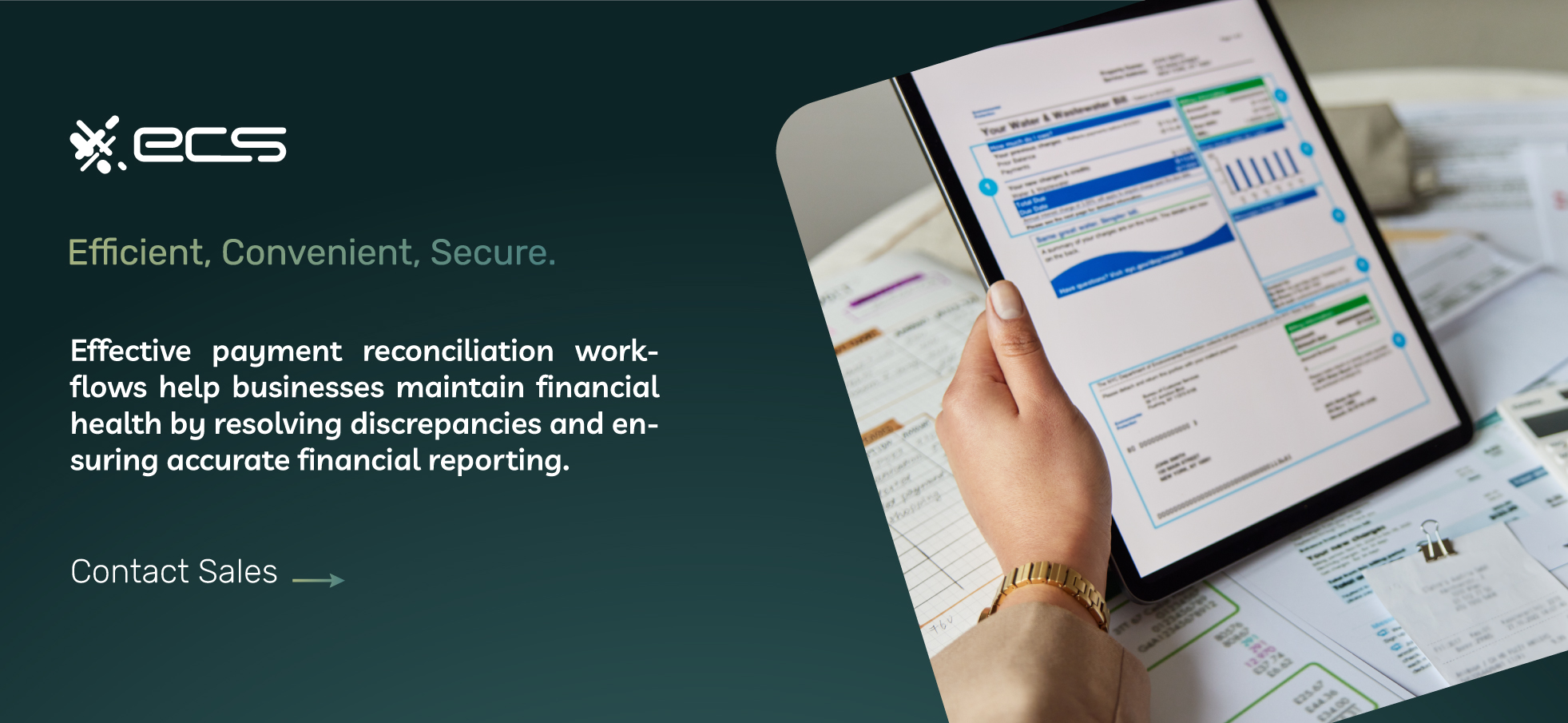
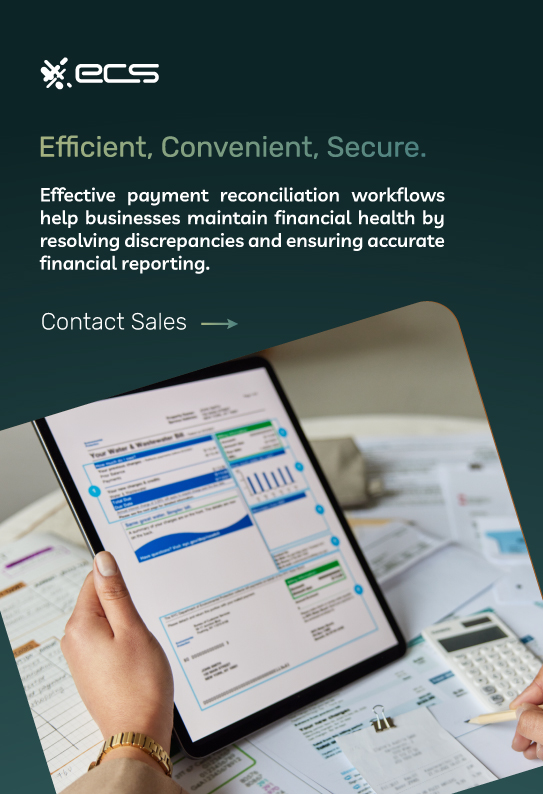
Step 5 Document All Changes
As you move through the steps above, you want to keep a separate record of every issue and how you resolve it. This should be a separate document that works as an overview of your entire payment reconciliation process for that period.
Creating this type of document allows you to look for patterns and find ways to fix the problems that led to the discrepancies.
During this process, you will also want to note any difficulty you had resolving issues or tracking down related documents. Doing this will help you improve your reconciliation process, saving time and improving overall efficiency.
Step 6 Final Approval
The CFO or another officer overseeing the company’s financial records will need to approve the final payment reconciliation, depending on the size of your organization. Your overall reconciliation report is a top-level document showing the results of the reconciliation audit trail.
Different Areas of Payment Reconciliation
Payment reconciliation can involve transactions across different areas of your business. Below, we’ll explain each type of reconciliation.
What Does Reconcile Mean In Banking?
Bank reconciliation is when you match your financial records with your banks and financial institutions. The goal of this reconciliation is for your cash balances on your internal accounting records to match your actual cash totals in your bank accounts and bank transactions.
Mismatches can occur during bank reconciliation due to fraud, human error, or accounting mistakes.
Accounts Receivable Reconciliation
Most businesses are already performing accounts receivable reconciliation. The goal is to ensure that customer payments match invoices and also match the related accounting records for those payments.
Account receivable reconciliation can go in both directions, and depending on the specific error, there may be deficiencies or surplus amounts.
Accounts receivable reconciliation problems are generally due to human error when manually entering invoice payments. However, overpayment and underpayment can also cause problems in this area.
Accounts Payable Reconciliation
Your accounts payable reconciliation deals with your payments to suppliers, vendors, and service providers. This area also deals with controlling expenses since you want to ensure your payments are correctly reflected.
When reconciling payments, consider including credit lines and other services, not just suppliers and vendors.
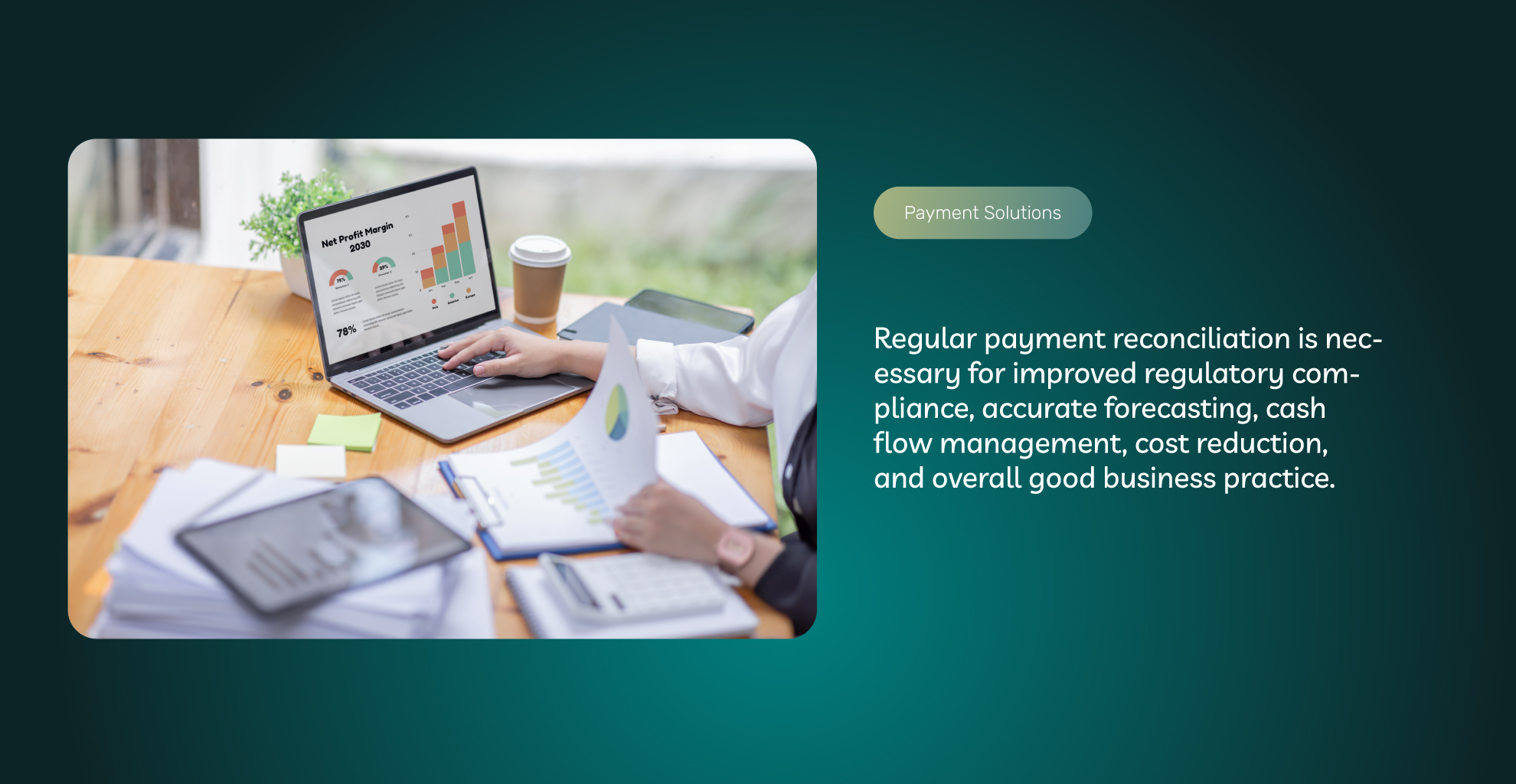
Credit Card Reconciliation
What is credit card reconciliation? This area of transaction reconciliation will focus on your business’s spending and expenses. You should match all of your credit card statements with actual receipts and invoices for goods and services.
You’re looking for any charges on your credit card statement that don’t have a corresponding invoice or expense report entry. Possible reasons for discrepancy in this area are fraud or misuse of company credit cards for non-approved purchases.
Generally, you will reconcile transactions once per month.
Payroll Reconciliation
You use payroll reconciliation to match all your payment records to employees with the actual wages due.
In payroll reconciliation, a business must ensure that all appropriate amounts are deducted according to tax regulations and other criteria. This is especially important since issues here could lead to fines and legal issues.
General Ledger Reconciliation
Your general ledger reconciliation will provide an overview of your overall accounting records. You approve it after conducting reconciliations, such as with accounts payable or payroll.
How Often Should Businesses Perform Payment Reconciliations?
Most businesses perform payment reconciliation every month, so it’s not performed in real time as transactions are made. Since you want to perform these every month, it’s critical to have an efficient workflow and process for your reconciliation.
One way to simplify the process is to introduce automation and integration wherever possible. Automation adds accounting entries whenever receiving payments or spending money. This helps you avoid manual entry errors and also ensures your data is always up to date.
Integrations help by combining software applications to share data. Once again, this prevents the need to manually move data across applications and platforms.
If you struggle with countless spreadsheets and compiling data from different sources during payment reconciliation, you want to look for automation and integration solutions to streamline your workflow.
Why Payment Reconciliation Is Necessary
Financial records are the vital signs of every business. They’re how business owners gain insight into their business’s performance. Inaccurate financial records can give rise to numerous issues, posing threats to profitability and the overall well-being of the business in the long run.
Below are the most critical areas of your business that will benefit from regular payment reconciliation.
Improved Regulatory Compliance
Payment reconciliation helps to ensure your regular business filings are always accurate. Accuracy is mandatory whether you’re a small business filing taxes or a corporation filing required financial reports. Payment reconciliation offers an internal control mechanism that keeps your bookkeeping accurate.
More Accurate Forecasting
Forecasting and reporting are critical for business planning and growth. Reports rely on accurate data to be useful, and payment reconciliation helps ensure that all your numbers accurately reflect your business.
This is also important when seeking credit lines or business loans. Inaccurate information can harm your application and prevent you from securing the loan or the terms you deserve.
Cash Flow Management
Every business needs to know precisely how much money is coming into the business and how much is going out. Payment reconciliation keeps you on top of your cash flow so you can make data-driven decisions on where to allocate resources.
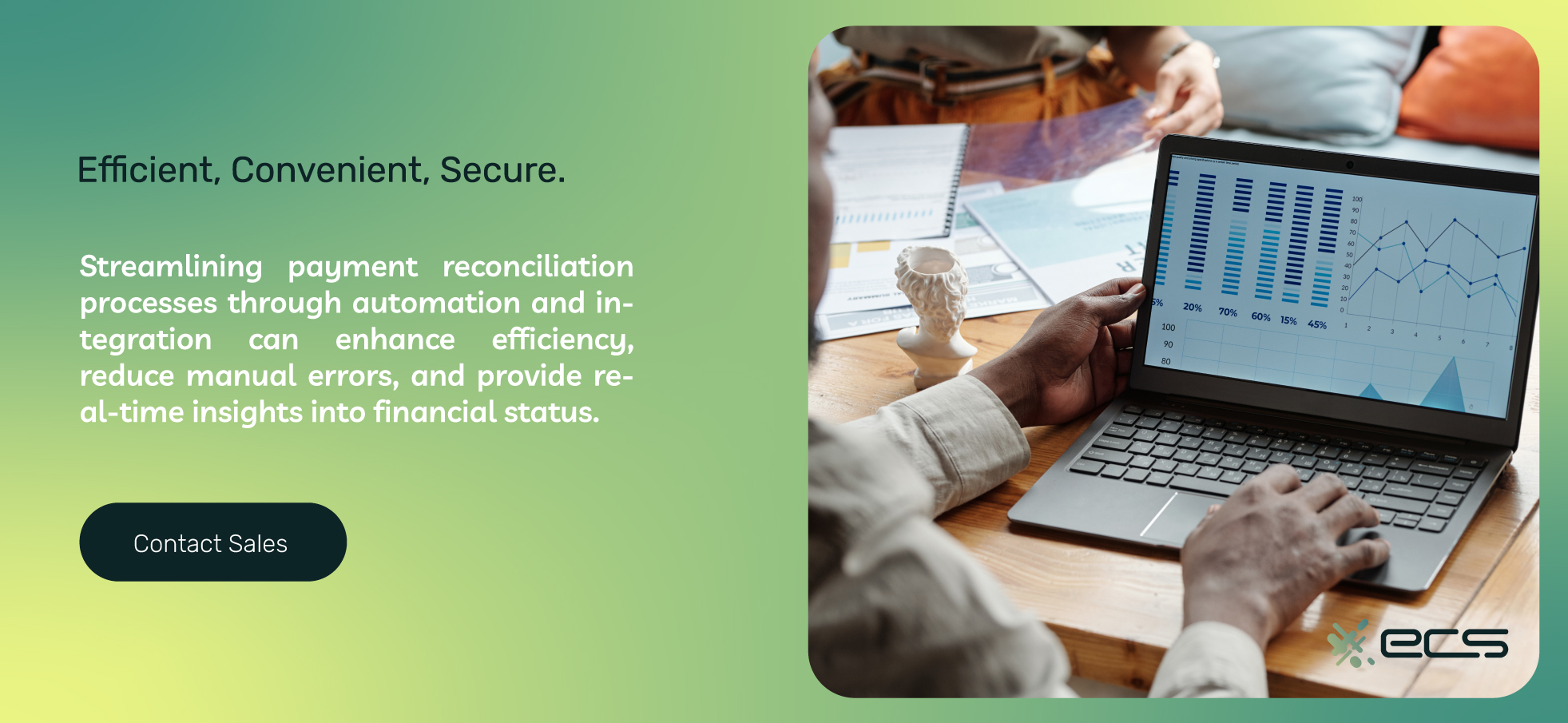
Reduce Costs
Cost-cutting and efficiency are paramount for nearly every business. Payment reconciliation helps you spot excess or fraudulent spending that can drive higher costs.
Getting a handle on improper expenses as early as possible can help you save money immediately, which you can then invest back into your business.
Good Business Practice
When you perform regular payment reconciliations, your partners, lenders, customers, and vendors can see you run a reputable business following best practices for your industry.
This helps you build trust and loyalty for your business and overall brand image.
Payment Integrations To Help With Reconciliation
A key way to streamline your payment reconciliation is through payment integrations. These integrations allow you to combine your payment systems with other business software.
Once you complete these integrations, you can quickly perform payment reconciliations without manually entering or transferring data.
ECS Payments offers businesses the latest payment integrations to help them reduce their costs and streamline their business operations.
If your business needs help integrating payment systems with your accounting or other software, contact ECS Payments to learn more about our innovative digital payment solutions.
Frequently Asked Questions About Payment Reconciliation
Payment reconciliation is an accounting practice that ensures all payment information aligns with bank statements and business records to identify and rectify discrepancies, ensuring the accuracy of a business’s financial records.
Payment reconciliation helps prevent financial losses due to error or fraud and it plays a crucial role in maintaining precise reports and in the overall financial health of a business.
Payment reconciliation involves comparing internal records, such as invoices and payment records, with external records, such as bank statements and payment processing records, to confirm accuracy. If discrepancies are spotted, then the business accountant must identify the sources, resolve the issues, document the changes, and obtain final approval.
Payment reconciliation covers various financial areas, including bank statements, credit card statements, accounts receivable, accounts payable, payroll reconciliation, merchant account deposits, and general ledger reconciliation. Each area addresses specific financial aspects of the business, helping to properly manage expenses, prevent fraud, and maintain accurate financial records.
It would be beneficial to perform monthly payment reconciliation. Regular payment reconciliation is necessary for improved regulatory compliance, more accurate forecasting, effective cash flow management, cost reduction, and establishing good business practices.
